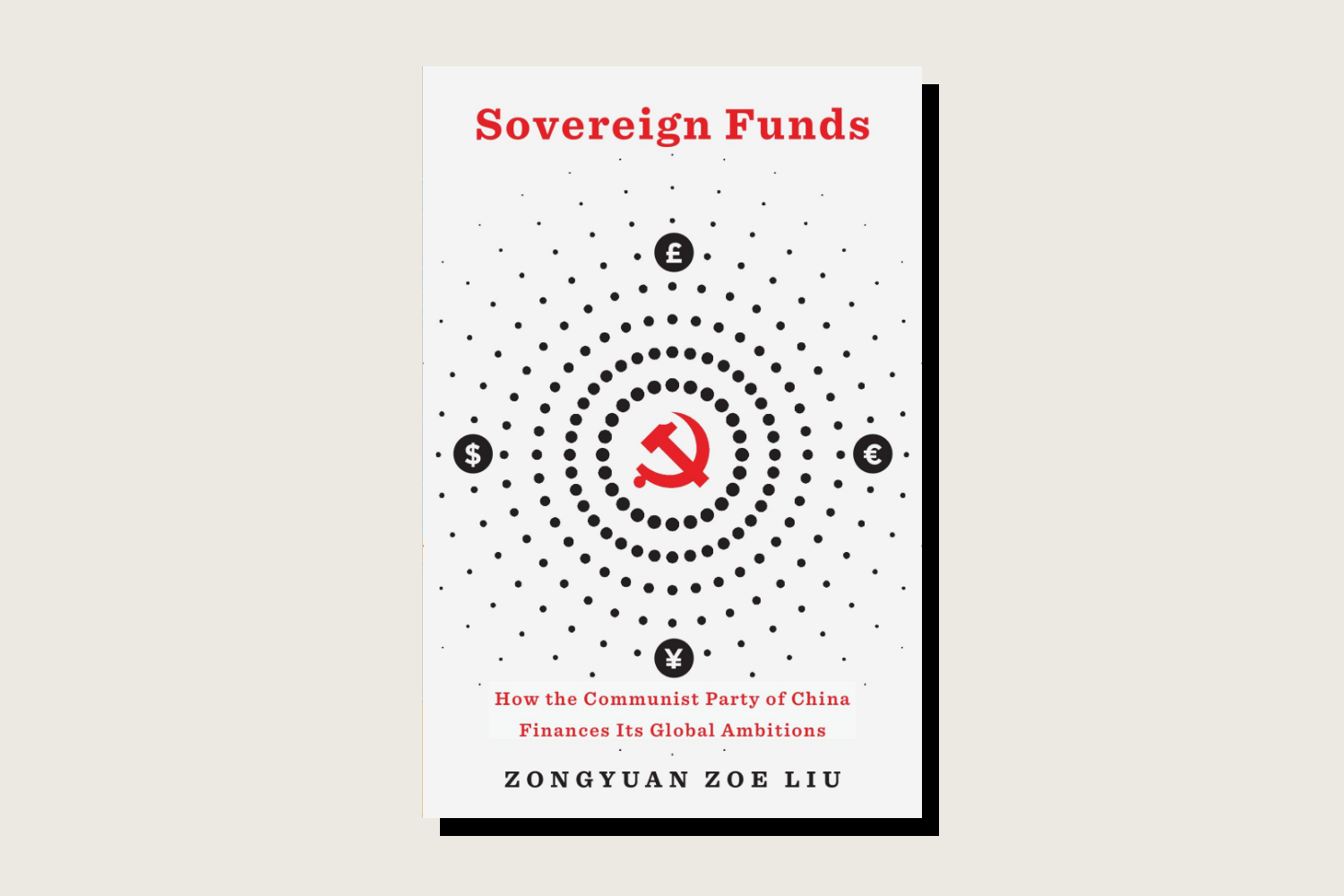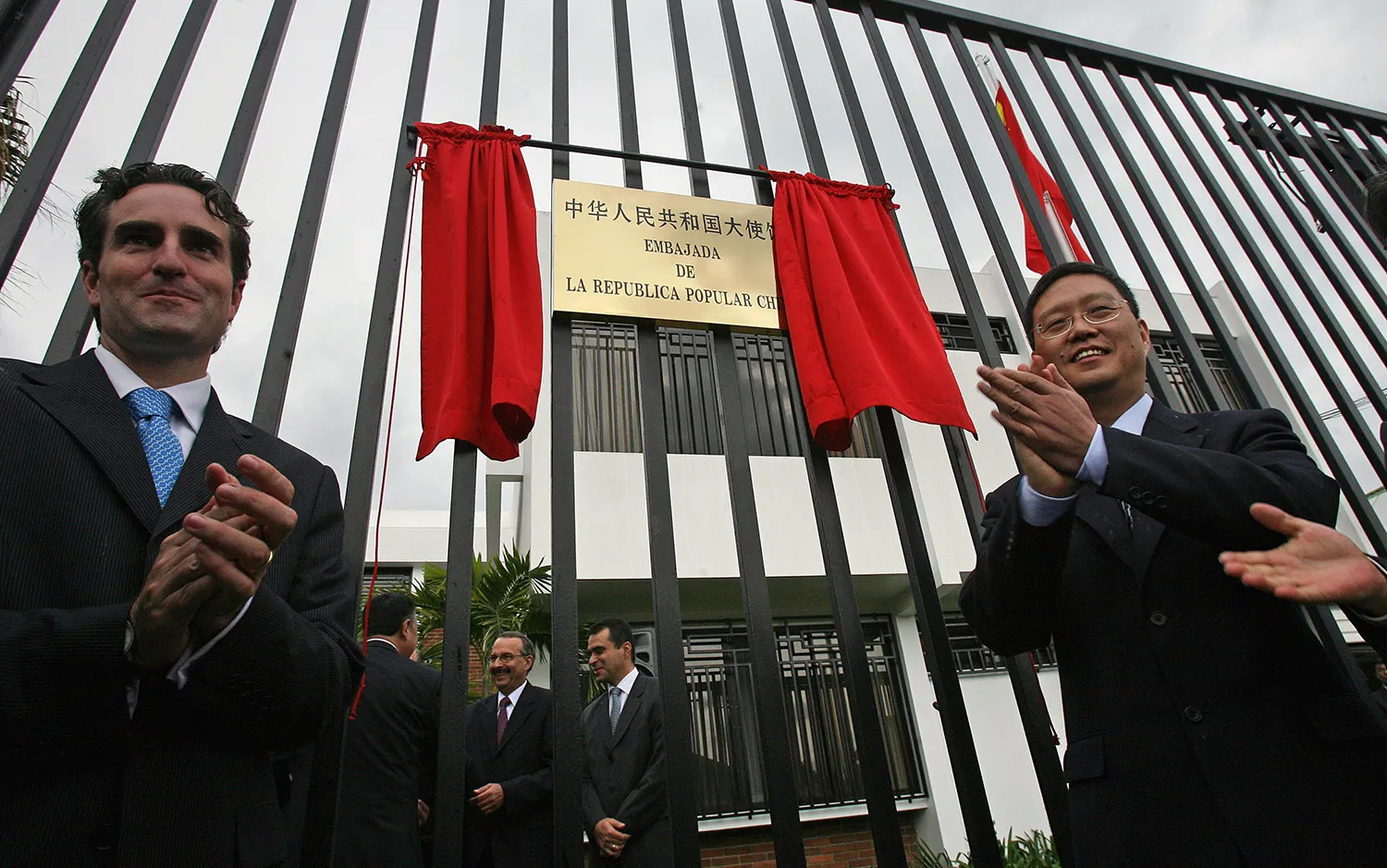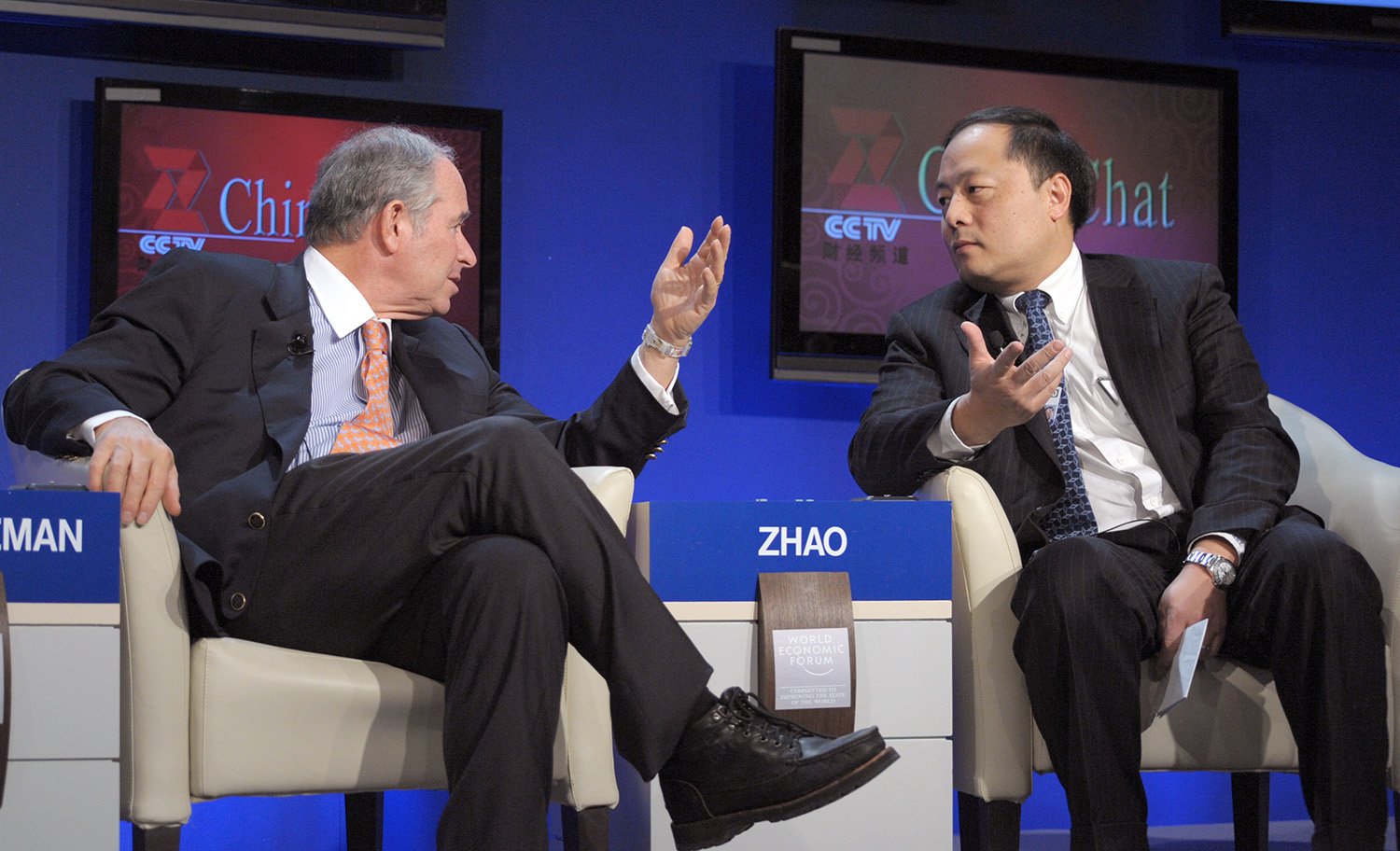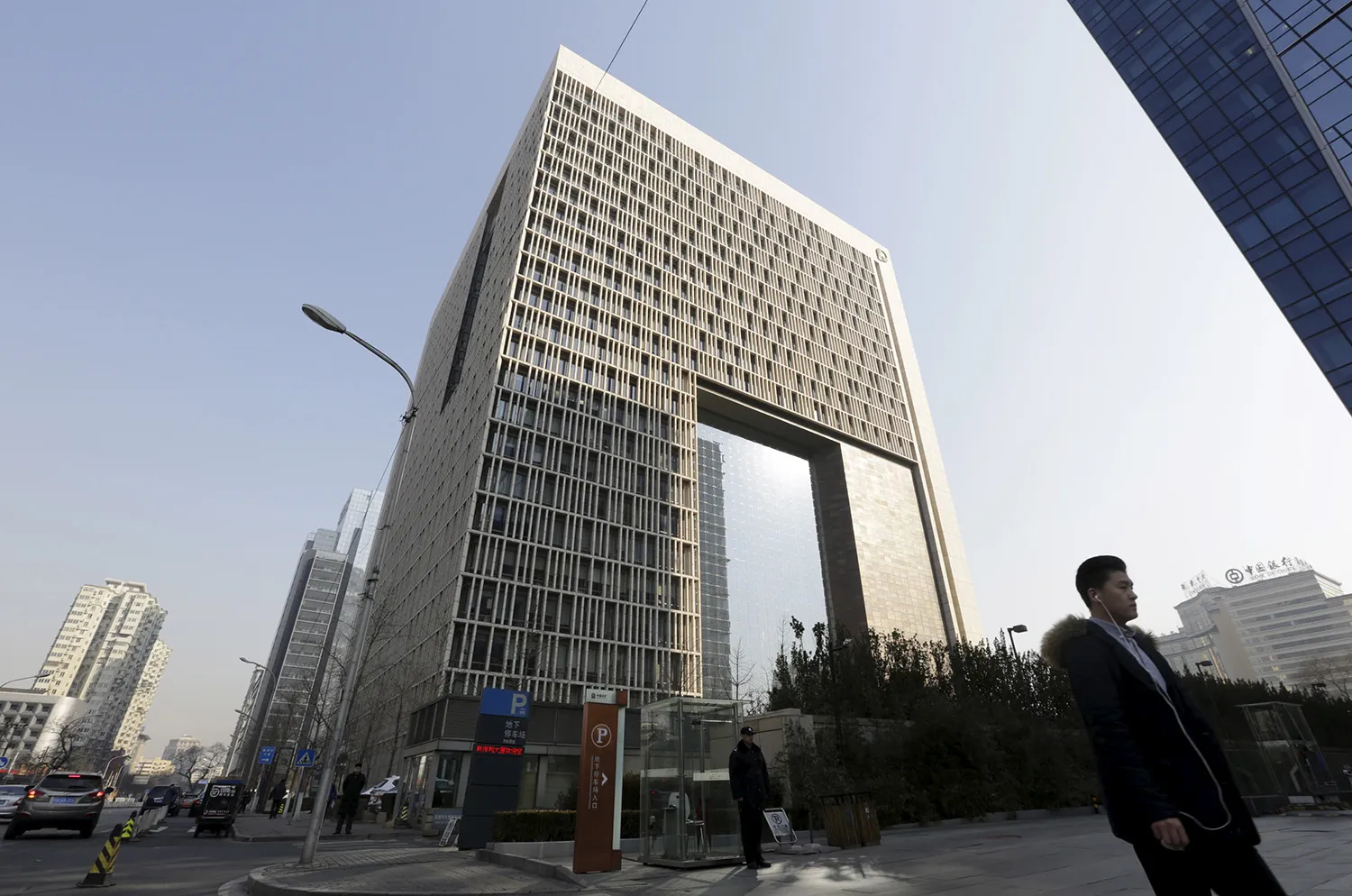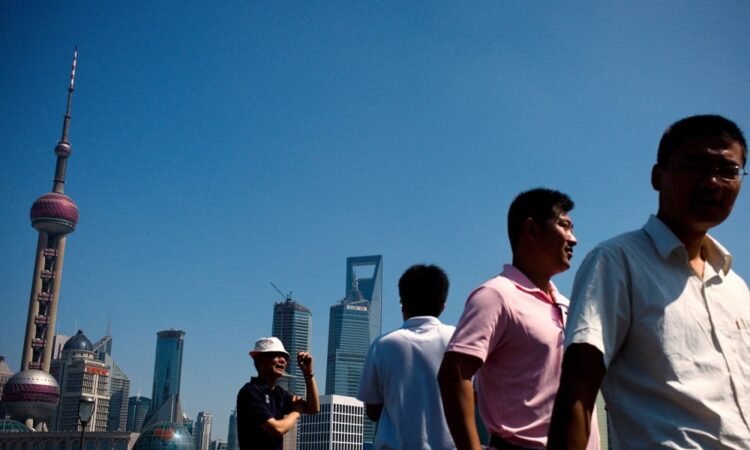
One of the enduring mysteries of China’s economic rise is why the country’s extended engagement with Western capitalism and democracy didn’t diminish the role of the state and lead to greater political and economic liberalization. After all, dictatorships in South Korea, Taiwan, Thailand, and other countries melted away after the West’s embrace spurred middle-class opposition that doomed authoritarian rule.
Sovereign Funds: How the Communist Party of China Finances Its Global Ambitions, Zongyuan Zoe Liu, Belknap Press, 288 pp., $45, June 2023
Zongyuan Zoe Liu provides a provocative answer. Beijing has marshaled the enormous horde of dollars it accumulated through trade with the West to bolster its economy when it flags and extend its financial reach globally, she argues. The more than $2 trillion managed by China’s sovereign wealth funds, or SWFs, she says, finances what some economists dub “CCP Inc.”
“If US policymakers fail to understand the political-economic model of China’s sovereign funds and how they advance the global ambitions of the [Chinese Communist Party, or CCP], then the United States risks surrendering its leadership in financial markets earlier than anticipated and in unexpected parts of the world,” she warns in her most recent book, Sovereign Funds: How the Communist Party of China Finances Its Global Ambitions.
Liu, a research fellow at the Council on Foreign Relations and Foreign Policy columnist, makes a persuasive case about the important role these funds play in buttressing China’s domestic economy. But she’s more alarmist than convincing about their role internationally. Parts of her book could be read as a tale of inexperienced Chinese financial officials getting fleeced by Western capitalists.
Still, her book is bound to be a go-to resource for understanding China’s powerful but little-understood sovereign funds. SWFs are state-owned investment funds financed by a country’s financial reserves. Rather than invest those funds in low-yielding U.S. Treasury bonds—boring but safe investments—many countries, especially energy-rich ones, have created SWFs to try to make more profitable, though risky, investments. In some ways, they invest like college endowment funds. Estimates vary, but globally SWFs manage about $12 trillion in assets, according to Global SWF, a research firm that tracks state-owned investors.
But, of course, SWFs aren’t run by universities but by governments, including some that are hostile to the United States. After the 9/11 attacks, U.S. lawmakers feared investments by Arab states and pressured a Dubai government-owned company, Dubai Ports World, to drop plans to buy six U.S. seaports. But political worries change. Emirati investment is now so welcome that chipmaker GlobalFoundries, part of an Abu Dhabi SWF called Mubadala Investment, recently received a $1.5 billion U.S. Commerce Department grant to expand its U.S. facilities. Meanwhile, Trump son-in-law Jared Kushner’s investment fund gets much of its cash from a Saudi SWF.
Now it’s Chinese investment that’s suspect, often rightly so.
But China ended up with this powerful tool somewhat by accident, rather than by conspiracy, as Liu makes clear. Beijing’s financial mandarins were a conservative group who saw how the economies of neighboring countries were pulverized when investors fled with their dollars during the 1997-98 Asian financial crisis, making it impossible for governments to pay their foreign debts. In response, Beijing blocked capital outflows more sharply, threatened jail time for those who sneaked dollars overseas, and accumulated vast dollar reserves from its enormous trade surplus.
With one exception, a fund that backed China’s Belt and Road Initiative (BRI), Liu writes, “China’s sovereign funds were capitalized without explicit geoeconomics or geostrategic mandates.”
Once the country had accumulated $1.1 trillion in reserves by 2006, then about the size of the Brazilian economy, China’s Finance Ministry became convinced there were better ways to invest the country’s money than buying U.S. Treasurys.
The Chinese government had some experience deploying the nation’s reserves. In 2003, it created Central Huijin Investment, which invested tens of billions of dollars from the reserves to rid China’s largest state-owned banks of nearly all their bad debts, using techniques developed in the capitalist West. This was hardly part of a CCP grand plan; it was basic financial management similar to how the United States handled the failure of insurer AIG and mortgage lenders Fannie Mae and Freddie Mac during the 2008-09 global financial crisis. Then-Goldman Sachs CEO Henry Paulson, who was later treasury secretary during the financial crisis, advised China on its bank cleanup and helped manage some of the banks’ initial public offerings.
Costa Rican Foreign Minister Bruno Stagno and China’s Deputy Foreign minister He Yafei clap during the opening ceremony of the Chinese embassy building in San Jose, Costa Rica, on Aug. 23, 2007, after the countries established diplomatic relations. Yuri Cortez/AFP via Getty Images
But efforts to use the reserves for overtly political purposes backfired. In early 2008, a memo on Costa Rica’s Foreign Ministry website revealed that China’s central bank had agreed to buy $300 million of Costa Rican government bonds as part of China’s lobbying to get the government to drop diplomatic recognition of Taiwan. Beijing asked Costa Rica’s Finance Ministry to keep the purchase secret, but after the memo became public, China was lambasted in the press. Liu calls the heavy-handed pressure campaign a “debacle.”
Around that time, financial experts in Beijing were debating how the reserves should be used. One idea was to use the money to finance an expansion of the country’s paltry social safety net, including its retirement fund. Others suggested creating a strategic resource reserve based on the U.S. Strategic Petroleum Reserve.
To her credit, Liu identifies this overlooked debate but doesn’t note its significance. If China had used its reserves to strengthen its social security system, as Norway’s SWF does, the country’s economy may have shifted more toward consumer-led growth, as Western economists—and some in China—have urged for decades. That would have given China a firm foundation for growth and eliminated some of the trade friction with the United States and Europe, which complain that China’s focus on exports, and its enormous subsidies, has led to Western job losses in the millions.
Instead, China’s Finance Ministry pumped $200 billion into a new SWF, China Investment Corp. (CIC), whose mission was to invest overseas. CIC now includes Central Huijin and manages $1.35 trillion in investments.
Burned by the reaction to China’s use of reserves to buy off Costa Rica, CIC stuck at first with commercial investments—and made a mess of it. The fund invested billions of dollars in Wall Street titans Morgan Stanley and Blackstone shortly before their share prices plunged during the global financial crisis. Next up was a heavy investment in Canadian energy companies before commodity prices swooned in the mid-2000s. CIC held on to its stakes for many years so it didn’t lose its shirt in the downturns, but its annual returns have lagged those of the benchmark S&P 500 and sometimes don’t earn more than the interest rate it pays on its capital.
Liu argues that China profited by developing closer relations with Wall Street eminences such as Blackstone CEO Stephen Schwarzman. But that’s not accurate, as much as some Chinese officials may have bragged to their bosses about their new friends. For all his Washington connections, Schwarzman, a big Republican donor, was mainly a messenger boy between Washington and Beijing during the Trump administration’s trade war with China and has little sway with the Biden team.
Blackstone Group CEO Stephen Schwarzman (left) talks with Hony Capital CEO John Zhao during a televised debate focusing on China’s growth at the World Economic Forum in Davos, Switzerland, on Jan 29, 2010. Eric Piermont/AFP via Getty Images
Beijing might not have benefited from the relationship, but Schwarzman did. The investments pumped up his standing in Beijing. In 2016, he started a scholarship program at Tsinghua University, Chinese President Xi Jinping’s alma mater. A year later, he lunched with Xi at the World Economic Forum in Davos, Switzerland.
The CIC investment paid off in “‘a very easy introduction to China, and Chinese institutions have given us a lot of money to invest in private equity and alternative products,’” Liu quotes Schwarzman as saying.
China’s central bank followed the Finance Ministry and invested in SWFs through its subsidiary, the State Administration of Foreign Exchange (SAFE). SAFE doesn’t disclose its activities as fully as CIC, but it’s estimated to manage about $1 trillion in its various investment funds.
SAFE had some flops, too, especially a 2008 investment of more than $2.5 billion in a private equity fund that bought a big stake in Washington Mutual, the largest thrift in the United States, which quickly went broke and was seized by regulators.
Between 2010 and 2014, however, it scored some hits when Zhu Changhong, a former senior executive at Pacific Investment Management Co., a major U.S. investment company, handled SAFE’s investments. His colleagues jokingly called him “SAFE’s savior,” while Chinese media labeled the publicity-shy Zhu “the invisible man.”
Over time, though, Chinese sovereign funds began to play an important role in the domestic economy. Six times between 2008 and 2015, according to Liu, Central Huijin pumped in a total of more than $150 billion to prop up Chinese stock exchanges when they appeared poised to melt down. Central Huijin became known as China’s “shareholder in chief,” she writes. But that role had its downsides. When Central Huijin sold part of its holdings in two big state-owned banks, the market plunged, and the fund’s president resigned three days later.
CIC also has become a big investor in Chinese tech start-ups, including e-commerce giant Alibaba and ride-hailing app Didi Chuxing. It has also put more than $250 million in the country’s top chipmaker, Semiconductor Manufacturing International Corp., as well as other technologies that China has prioritized in its five-year plans.
The headquarters of China Investment Corp. (CIC) in Beijing on March 1, 2016.Jason Lee/Reuters
In that way, China’s SWFs domestically have become more in line with the plans of the state and Xi, as it competes with the United States to dominate global technology. Liu says she tracked the change in SWF priorities by “closely following the money … to uncover the politics.”
Internationally, though, the link is less clear. Many SWF investments in energy and agriculture are Chinese government priorities, but what would one expect from government investment funds? The question is whether the funds assess investments commercially, too, as areas of potential profit. Generally, that seems to be the case—if only because the funds’ executives want to be seen as trustworthy stewards of the nation’s wealth.
Liu argues that China’s SWFs are Beijing’s secret weapon in pushing its overseas economic agenda. They “empower the state to move and even shake the market by making selective equity investments that promote its industrial policies and geoeconomic interests,” she writes.
That’s certainly the goal. But as Liu also makes clear, they also waste a lot of money and make remarkably ill-timed investments. Unquestionably, China uses its money to win friends and cow enemies internationally. But SWFs are only one of a number of Chinese financial institutions in service to the state, including its state-owned banks.
In one big area, SWFs clearly put politics over profit. Xi’s top international economic priority is China’s BRI, which invests many billions of dollars in infrastructure projects around the globe, hoping to tie indebted nations more tightly to Beijing. SAFE is the biggest funder of the Silk Road Fund, which has provided financing for a hydropower plant in Pakistan, a liquefied natural gas plant in Russia, and a variety of infrastructure investment funds in Kazakhstan, Europe, and Russia.
But even there, the ability of China’s SWFs to further Xi’s aims internationally is questionable. A number of BRI countries are increasingly unable to repay their project loans, suggesting that the funds’ next big mission will be figuring out how to refinance projects already under construction or eat the losses.
At the same time, investment opportunities in the United States, Europe, and other wealthy nations are shrinking as fears of China’s global ambitions grow. According to Rhodium Group, a market research firm, Chinese investment in the United States—no matter who finances it—plummeted to $1.5 billion in 2022 from $54 billion in 2016 when SWFs and other Chinese investors targeted U.S. technology, energy, and agricultural firms. Washington now is pressing other Western capitals to take a jaundiced look at potential Chinese investments for fear that they could boost Beijing’s military or make the West too dependent on Chinese sources.
And one more concern for China: As the freezing of Russia’s reserves in the wake of its invasion of Ukraine has shown, any Chinese investment abroad can turn into a vulnerability. During the global financial crisis, Washington worried that China might sell off its trillion-dollar holdings of U.S. Treasurys and other government debt and further unhinge markets. Now it’s Beijing’s turn to worry that investing its reserves abroad, through SWFs and other means, can be used to weaken CCP Inc.

